Abstract
BRL 36650 is a new type of penicillin in which a formamido group has been introduced into the 6 alpha-position of the nucleus. The compound is highly active against aerobic gram-negative bacteria and is stable to a wide range of beta-lactamases produced by these organisms. Against members of the family Enterobacteriaceae, BRL 36650 was considerably more active than piperacillin, particularly against beta-lactamase-producing strains, and showed a similar level of activity to moxalactam, aztreonam, and the third-generation cephalosporins cefotaxime and ceftazidime. Against Pseudomonas aeruginosa and other Pseudomonas species, BRL 36650 was more active than piperacillin, cefoperazone, and aztreonam and compared favorably with ceftazidime. BRL 36650 was highly active against Haemophilus influenzae and Neisseria gonorrhoeae, including beta-lactamase-producing strains, and against Acinetobacter calcoaceticus. Clinical isolates of Enterobacter species and P. aeruginosa which showed markedly reduced susceptibility to cefotaxime, ceftazidime, and aztreonam were only slightly less susceptible to BRL 36650. Against Bacteroides fragilis and most gram-positive bacteria, BRL 36650 showed only a low level of activity. BRL 36650 was found to be only 35% bound to human serum protein, and the antibacterial activity was little affected by the presence of serum. In contrast, the composition of the test medium influenced the activity of BRL 36650 slightly, and an antagonistic effect could be demonstrated between the compound and a component of certain Mueller-Hinton media.
Full text
PDF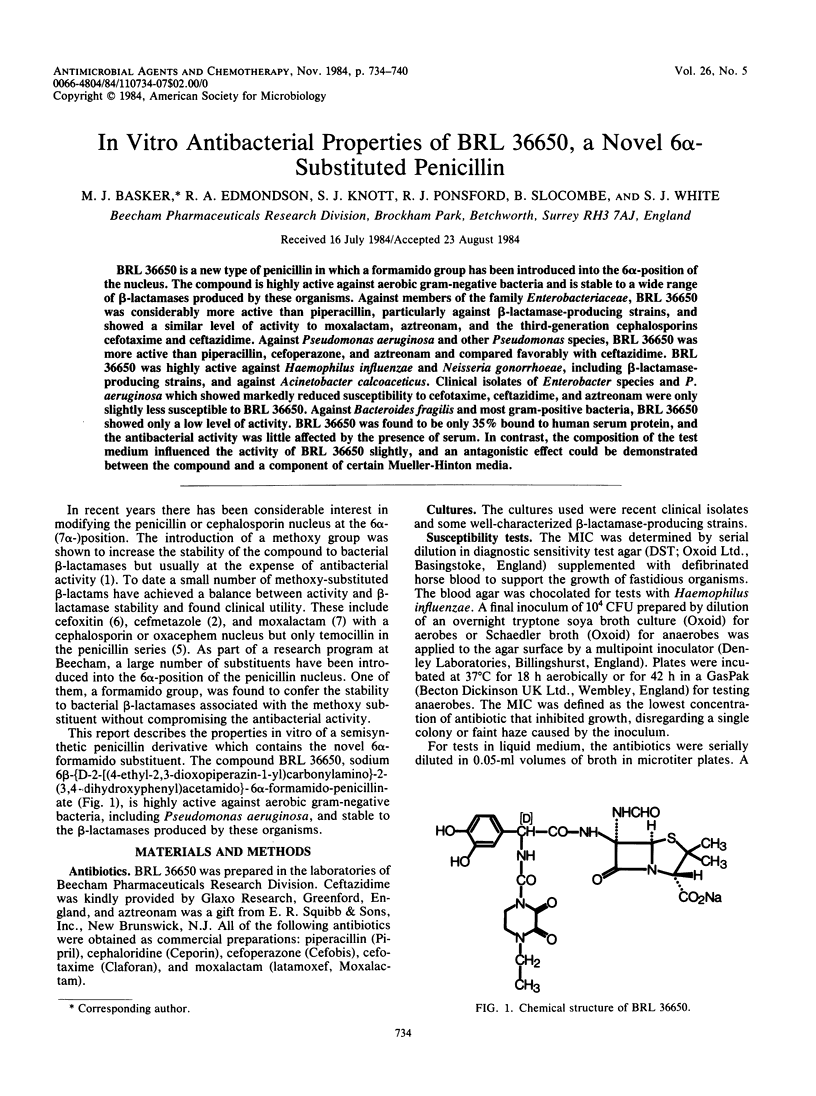
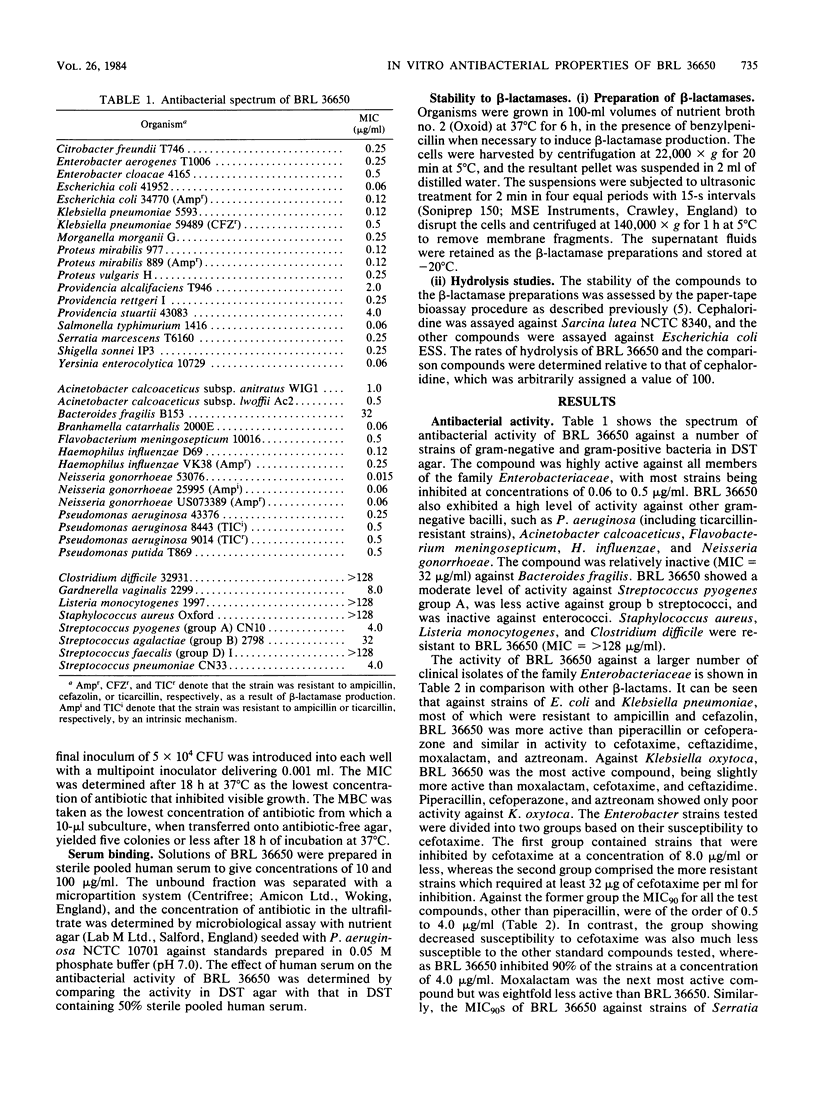
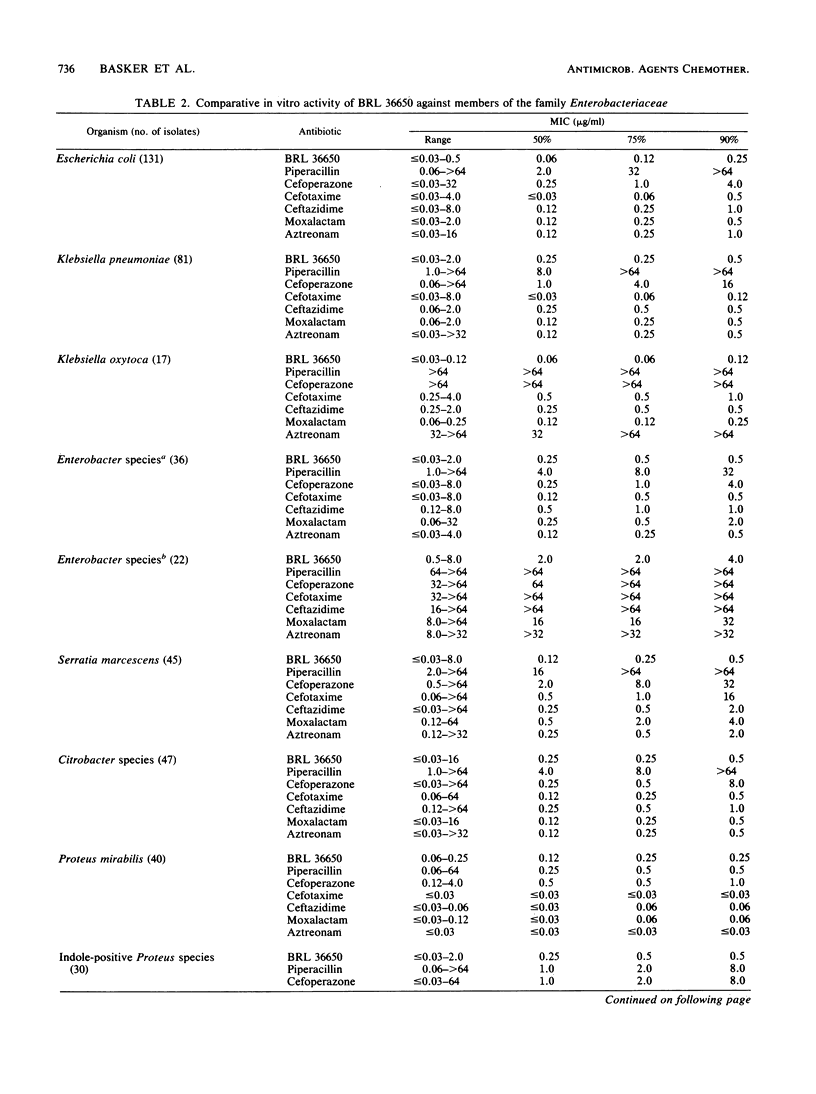
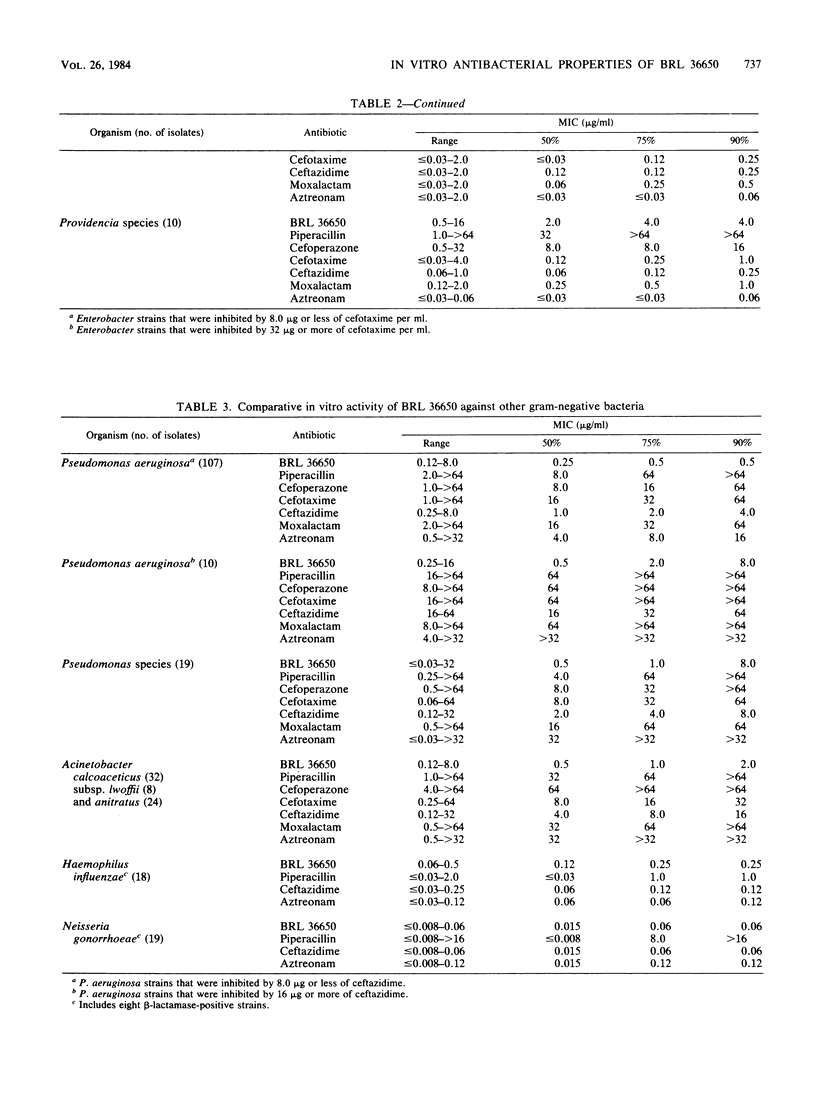
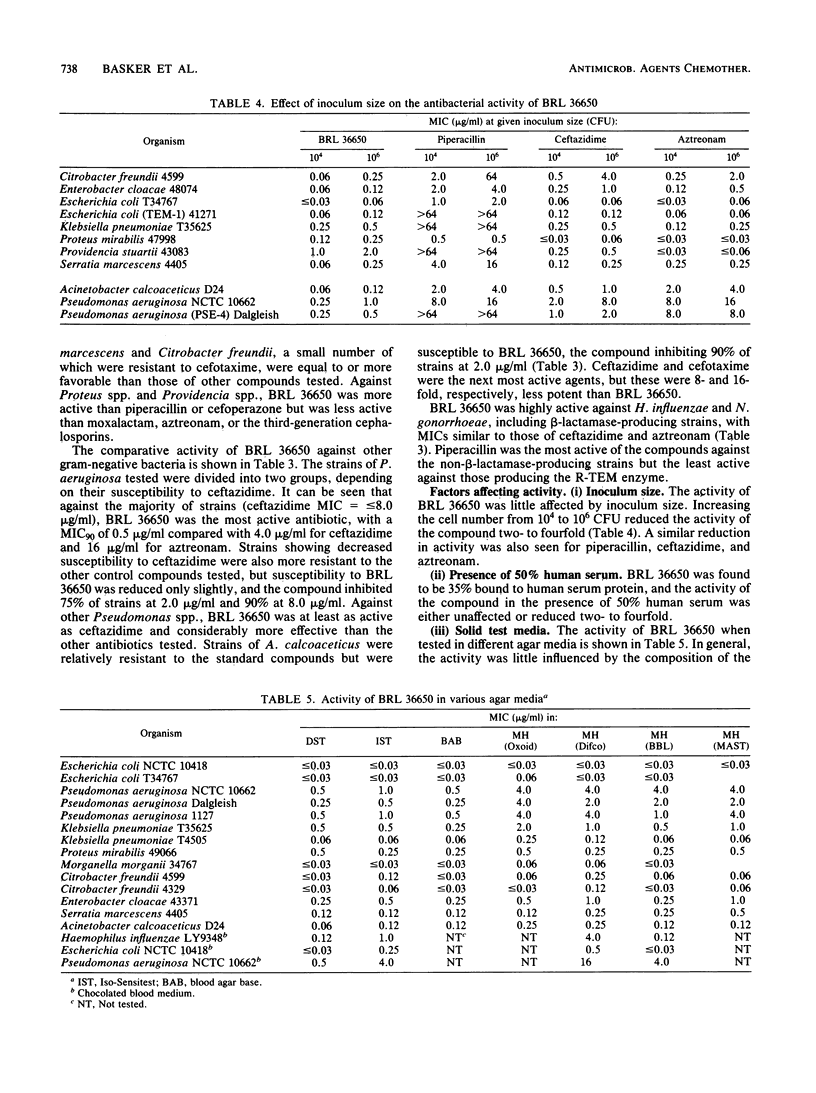
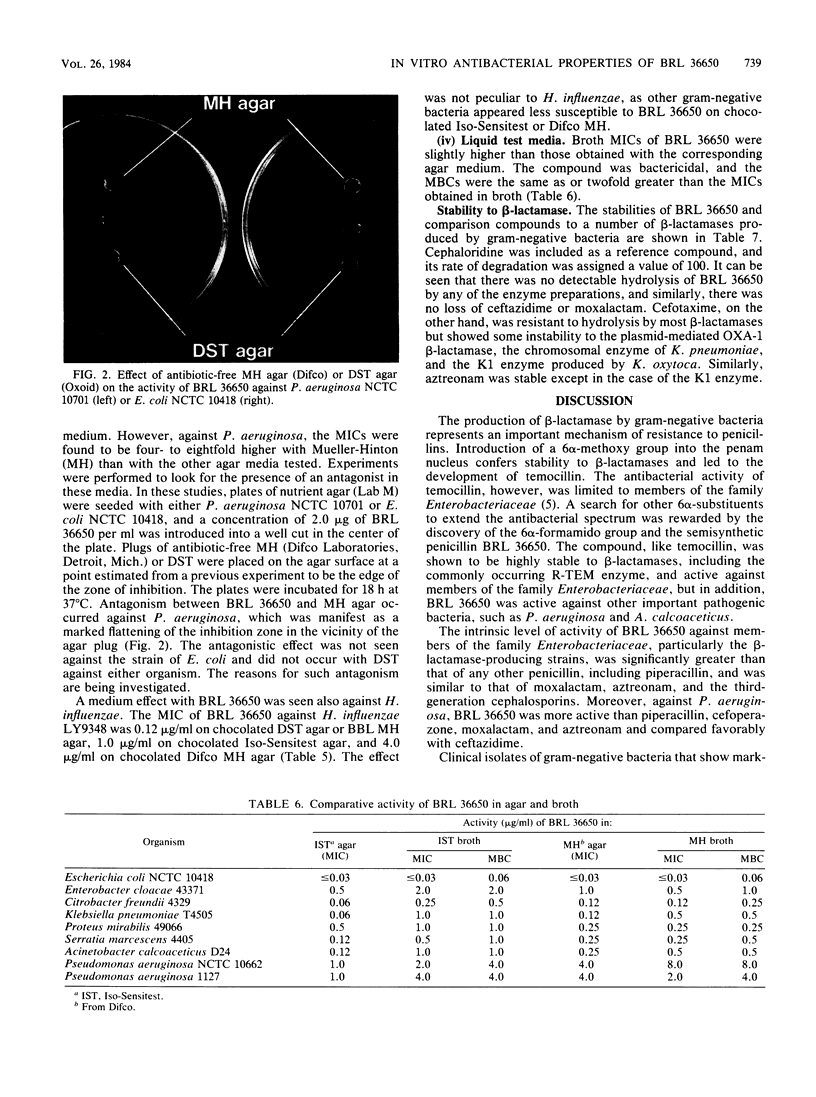
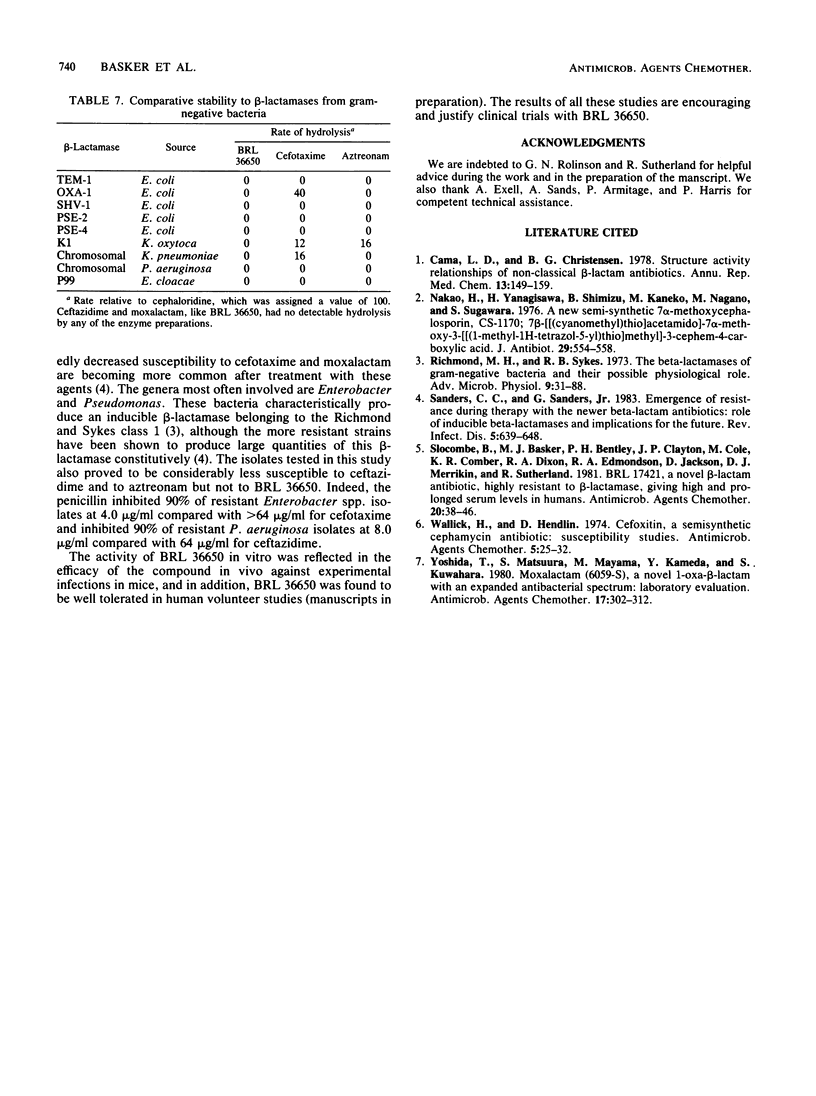
Images in this article
Selected References
These references are in PubMed. This may not be the complete list of references from this article.
- Nakao H., Yanagisawa H., Shimizu B., Kaneko M., Nagano M. A new semisynthetic 7alpha-methoxycephalosporin, CS-1170: 7beta-((cyanomethyl)thio)acetamido)-7alpha-methoxy-3-((1-methyl-1H-tetrazol-5-yl)thio)methyl)-3-cephem-4-carboxylic acid. J Antibiot (Tokyo) 1976 May;29(5):554–558. doi: 10.7164/antibiotics.29.554. [DOI] [PubMed] [Google Scholar]
- Richmond M. H., Sykes R. B. The beta-lactamases of gram-negative bacteria and their possible physiological role. Adv Microb Physiol. 1973;9:31–88. doi: 10.1016/s0065-2911(08)60376-8. [DOI] [PubMed] [Google Scholar]
- Sanders C. C., Sanders W. E., Jr Emergence of resistance during therapy with the newer beta-lactam antibiotics: role of inducible beta-lactamases and implications for the future. Rev Infect Dis. 1983 Jul-Aug;5(4):639–648. doi: 10.1093/clinids/5.4.639. [DOI] [PubMed] [Google Scholar]
- Slocombe B., Basker M. J., Bentley P. H., Clayton J. P., Cole M., Comber K. R., Dixon R. A., Edmondson R. A., Jackson D., Merrikin D. J. BRL 17421, a novel beta-lactam antibiotic, highly resistant to beta-lactamases, giving high and prolonged serum levels in humans. Antimicrob Agents Chemother. 1981 Jul;20(1):38–46. doi: 10.1128/aac.20.1.38. [DOI] [PMC free article] [PubMed] [Google Scholar]
- Wallick H., Hendlin D. Cefoxitin, a semisynthetic cephamycin antibiotic: susceptibility studies. Antimicrob Agents Chemother. 1974 Jan;5(1):25–32. doi: 10.1128/aac.5.1.25. [DOI] [PMC free article] [PubMed] [Google Scholar]
- Yoshida T., Matsuura S., Mayama M., Kameda Y., Kuwahara S. Moxalactam (6059-S), a novel 1-oxa-beta-lactam with an expanded antibacterial spectrum: laboratory evaluation. Antimicrob Agents Chemother. 1980 Mar;17(3):302–312. doi: 10.1128/aac.17.3.302. [DOI] [PMC free article] [PubMed] [Google Scholar]



